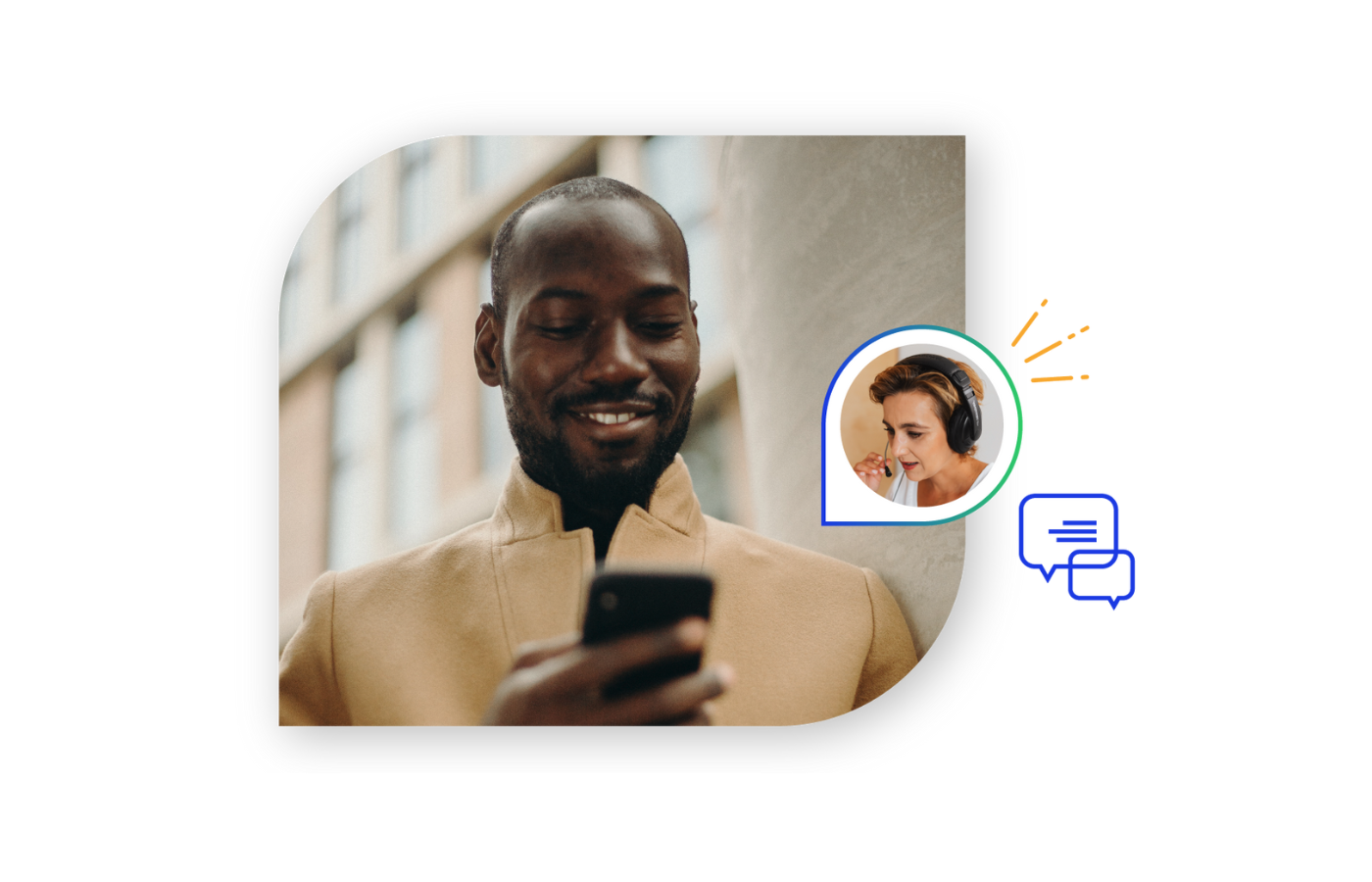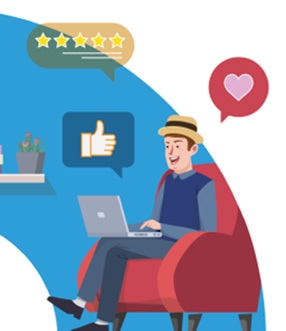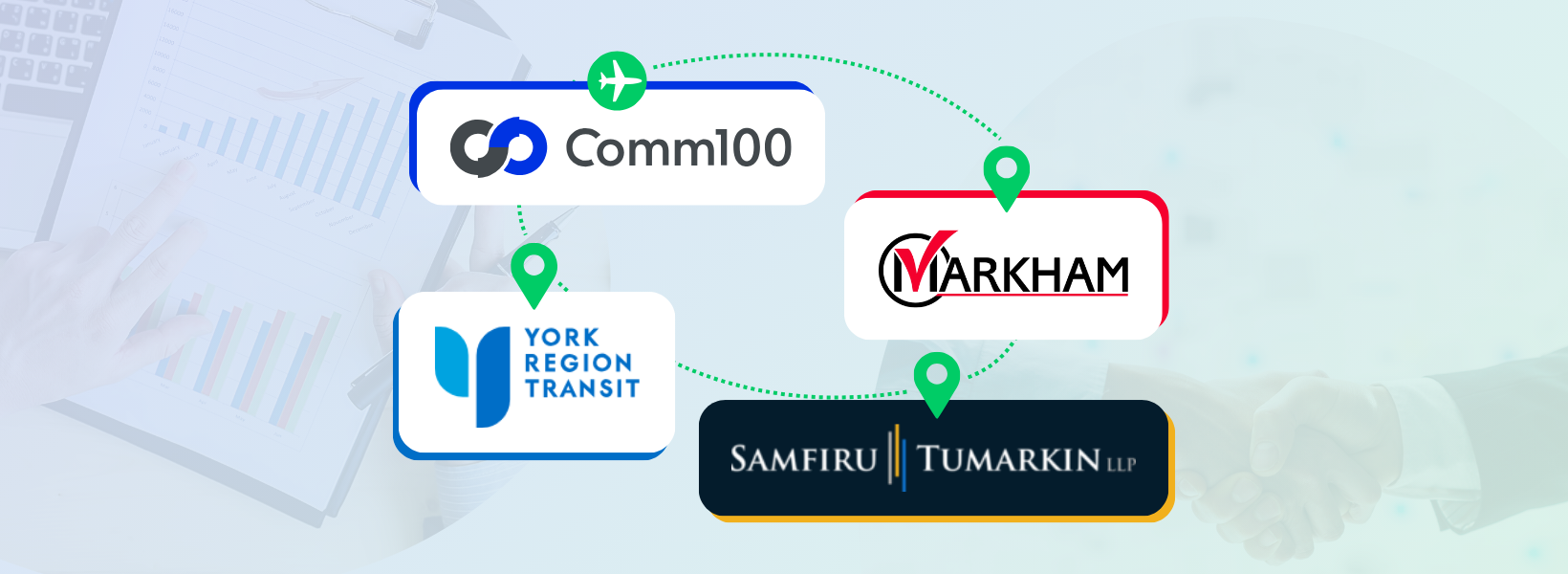It’s 2018, and customer expectations are changing faster than ever. Consumer patience is dwindling; we want better, more accessible products, and everything that we do seems to revolve around convenience. Companies that couldn’t deliver are now either history or relics that remind us of another time – think the last Blockbuster.
While some businesses have struggled to withstand the shifting tides, others have reacted in a timely enough fashion to keep up (at least minimally) with changing customer expectations. Other businesses still have not only survived, they have thrived amidst these changes.
The success of these industry leaders is thanks to their shared knowledge of (and ability to act on) a simple truth: the best defense is a good offense. In other words, why invest in chasing after customer expectations when you could be shaping those expectations yourself?
This blog post is not about the top customer service trends to watch out for in 2018. What we have compiled here is a list of today’s industry-leading customer service examples. In this list, you will find the customer service developments that have reshaped consumer expectations, and that are on their way to determining the customer expectations of the future. The following best practices set contemporary leaders in innovation apart from the pack and represent what exceptional customer service looks like in 2018.
1. Organic Mobile Experiences Blur Channel Lines
“Multichannel” and “omnichannel” have been buzzwords for years now. In a way, each whipped the customer service industry into a frenzy when they came about, prompting the sale of products that would help companies remain relevant by establishing more and more ways of communicating with customers.
But this, according to Murph Krajewski, VP of Marketing at Sharpen, is missing the point. “Omnichannel isn’t actually about channels, it’s about your customers,” Krajewski says. “In marketing realms, it means putting a message anywhere a customer might be looking, listening, etc. In customer service, it means offering help in any way your customer might be trying to find it.”
In 2018, industry leaders have turned to mobile as a means of establishing an effective omnichannel outreach in customer service and in marketing. These companies know that customers want user-friendly mobile experiences that they can access on the go (in 2017, 67 percent of website traffic worldwide was generated from mobile devices). For consumers, mobile blends daily physical life with the convenience of the virtual. Similarly, effective mobile experiences can blend service channels together, creating an experience that is purely customer-centric.
There are several ways that companies have tapped into mobile as a source of omnichannel, or channel-less, customer service in 2018. One is through mobile apps that bridge the gap between in-store and online purchasing.
Who is doing this right? Starbucks and Chipotle.
Starbucks and Chipotle are prime examples of how mobile channels can be used to deliver exceptional customer service. Both companies have apps that let you place your order via mobile, allowing them to have your meal or drink ready by the time you arrive at the store. This eliminates common customer pain points, alleviating lines and making these companies’ products more accessible for consumers who are on the go.

Source: Chipotle
Patrons of Chipotle and Starbucks can pay in-app, which gives them additional payment options – such as Apple Pay – that are traditionally not available in stores. Starbucks’ mobile app has other interesting features that further improve the customer experience, including digital tipping, Shake to Pay, and a rewards system that incentivizes purchases by offering free food and drinks. The app even tells customers the songs playing in-store and lets them save the music to a playlist on Spotify. These features proactively contribute less urgent – but still welcomed – solutions to active customer needs.
For Starbucks, a seamless, attentive mobile experience has paid off. According to eMarketer, in the United States, 23.4 million people ages 14 and up will use the Starbucks app to make a point-of-sale purchase at least once every six months this year. As a result, Starbucks’ app has become the most widely used mobile payment platform in the U.S., even outperforming established payment apps such as Apple Pay, Google Pay, and Samsung Pay.
Get on Board: Consider what your customers need, and how you can meet these needs in your company app. For example, if your customers need simple, on-the-go access to customer care, consider adding mobile live chat to your app (for an example of this, look no further than the GEICO Mobile App). If you have already covered your customers’ basic needs, think outside the box about what other relevant features will help you add extra value to your app and inspire continued use (like Starbucks’ song sharing feature, for example). By making your app a one-stop-shop for customer service needs, marketing offers, mobile payments, and more, you will be on your way to putting your customers before your channels, inspiring loyalty and boosting app retention.
Comm100 Live Chat
Offer real-time, personalized, efficient support that your customers and agents will love at 1/3 the cost of voice support.
Learn more
Comm100 Live Chat
2. Delivery in Hours – Tailored to Fit Customer Needs
Just years ago, customers were prepared to wait a week or more for ecommerce deliveries. They were prepared to accept limited shipping options, high delivery costs, and were accustomed to ordering products without tracking information. If they wanted to return a product, they usually had to pay the cost of return shipping and go out of their way to make the return. Then, companies began to raise the bar, offering faster, cheaper delivery and changing customer expectations and online buying habits for good.
Who is doing this right? (You guessed it) Amazon.
No company is more responsible for what today’s consumers expect out of delivery than Amazon. The ecommerce giant is famous for the “Amazon Effect,” which describes the immense role that the company’s industry-leading customer service has played in shaping customer expectations over the years. The main way Amazon has done – and continues to do – this is through its Prime membership service.
Amazon Prime began to pick up members as early as 2005 with the attractive offer of free two-day shipping on eligible purchases within the United States. In following years, the program spread across the world, including to Europe, Canada, India, and Mexico.
But Amazon wasn’t done pushing the boundaries of what delivery could be. In 2015, Amazon began offering free one-day shipping in 14 metropolitan areas in the U.S. Next, Amazon introduced Amazon Prime Now, which offers free same-day delivery and even free two-h our delivery in some areas.
It’s not just fast and free delivery that sets Amazon apart: it’s also how they deliver. In supported areas, the company currently offers their Prime members an “Amazon Key” service, which lets delivery people drop packages off inside customers’ homes. Recently, Amazon expanded this service with their “in-car” delivery option. This enables the company to deliver packages to a customer’s car in a matter of hours, and drop them off in users’ trunks.
Prime Wardrobe is another Amazon initiative that is changing the way customers shop. This “try before you buy” service lets Prime members try a broad selection of clothes on in their homes before they commit to buying them, tackling a problem that deters many consumers from buying clothes online: fit. This program, along with Amazon’s low-hassle return process and free return shipping, has helped the company cultivate confidence amongst even the wariest online shoppers.
How have these innovations worked out for Amazon? As of 2018, Amazon has over 100 million Prime subscribers worldwide (and that’s not even counting people who share login info with family and friends). Their total customer count is over 310 million active customers – a number that was last reported in 2016. This year, the company was ranked the most valuable brand in the world, with an estimated brand value of about 150.81 billion U.S. dollars. So, we think it’s safe to say that Amazon’s efforts in delivering exceptional customer service have paid off.

Get on Board: Innovative, flexible delivery isn’t just for Amazon: Customer-centric businesses like Zappos offer it too, and so can you. By partnering up with third-party delivery companies, more and more organizations are lining up to provide their customers with the fast and cheap shipping solutions that they want. For smaller companies that can’t afford to offer low-cost same-day or next-day shipping, adding multiple shipping options and free standard shipping promotions can also help you raise your bottom line while improving the quality of your service.
Recommended for you: Get Ready for The Shopping Season with These 10+ Tips
3. Customer Service Extends to Social Messaging
As of July 2018, the top 9 messaging apps boasted a combined total of over 5.8 billion monthly users worldwide. What this means is big news for business: More people across the globe are now using messaging apps over social media.

Source: Business Insider
Because of the growing trend towards messaging apps, many companies are establishing their presence on a variety of messaging platforms in 2018, including Facebook Messenger, WeChat, and Telegram. There are several ways that companies are opting to use third-party messaging systems to connect with their customers. One is by providing customer service directly on messaging apps. This gives customers another option for connecting with their favorite companies on the go, outside of the company’s native app. It’s also a great option for small businesses that don’t have the resources for a large, dedicated call center.
Another way that companies are using social messaging in 2018 is to deliver their services directly in-app. Apps like Facebook Messenger accept online payments, which means that with the right setup, customers can do anything from order a pizza, to call a ride, to pay a bill.
Who is doing this right: Sephora and Uber.
Sephora is using its presence on messaging apps such as Facebook Messenger not only to connect users around the world to the right customer service team, but also to help customers book makeover appointments and even “test” beauty products. Users can opt to try on looks using Sephora’s Camera Effect on Messenger – a new feature that Facebook announced at this year’s F8. If users like what they see, they can decide to “shop the look,” which shows them a list of products that they can buy to recreate the same aesthetic in real life.

Sephora Facebook Messenger App
Uber is another company that makes the most out of its integrations with messaging apps. Uber lets users complete almost any function that they could perform in the company’s own app on Facebook Messenger, such as set up a new account, call your driver, track your car, and pay for your ride. Uber also has a presence on other apps, which it uses to cater to different user bases around the world. For example, Uber encourages users in Argentina to contact them on Telegram Messenger for 24-hour customer support. With messaging apps offering free calls using cellular data or WIFI, this channel saves Uber money on phone support, while delivering accessible customer service to its users.
Get on Board: Consider what messaging apps your customers are on and begin to establish your presence on those apps. Different apps are popular in different geographic areas, with Facebook and WhatsApp being the most popular worldwide (although Facebook Messenger has a richer set of features for businesses). To facilitate customer service via messaging apps, it pays to consider adopting a live chat program that can integrate with third-party messaging apps. Comm100 offers Facebook Messenger integrations that allow companies to organize, sort, filter, prioritize, and assign conversations to individuals and departments, ensuring that messages are handled with the same professionalism and care that your customers expect from your website.
4. Chatbots Automate Exceptional Experiences
When chatbots first started gaining popularity, some thought leaders declared them victims of a classic hype cycle, with many users placing high expectations on technology that was just in its infancy.
But chatbot uptake is on the rise in 2018 as companies continue to adopt live chat on their websites, expand customer service offerings on their native apps, and build their presence on messaging apps (all of these platforms are chatbot-friendly).
Another green light for companies comes with the fact that consumers are already on board with the growing number of chatbots hitting the market: 61 percent of consumers believe that having chatbots in customer service is the way of the future. Seventy percent of millennials report positive experiences with chatbots, and many prefer chatbots for the convenience and immediate gratification that they provide.
Recommended for you: It’s All About The $$$ – How Much Money Can Chatbots Actually Save You?
Chatbots can be used to deliver exceptional customer service in many ways. Website-based service chatbots can be used as advanced knowledge bases, promoting self-service and helping customers answer simple questions. This reduces wait time and empowers agents to become specialized in more advanced queries. Chatbots are always available and can be used to extend a company’s customer service offerings to 24 hours per day, 7 days a week.
Chatbots can also be used to automate tasks such as appointment booking, order taking, content distribution, and countless industry-specific operations. Chatbots that aim to engage users and deliver services are often found on company apps and messaging platforms, where they are easily accessible to users.
Who does this right? Alaska Air and Capital One.
Alaska Air’s chatbot, Jenn, is integrated into its website’s live chat interface. This allows the company to assist customers with valuable operations, such as searching for a flight, finding promotions, checking flight status, viewing an existing reservation, and more. Jenn directly navigates visitors to the page that they are interested in, helping incentivize customers to use all the tools available on the company’s site before calling in.

Source: Alaska Air
Capital One’s Eno is an SMS chatbot that helps its users track account balances, check recent transactions, see available credit, get bill due dates, and pay credit cards – all using their phone’s text messenger. Customers have hailed Eno as an easy and convenient time-saver, allowing them to perform banking options on the go. As one Capital One employee and customer writes, “(S)he’s totally awesome! Eno saves you the time of signing in to your account by just sending a mere text. It takes little to no time to get an update on your card. It feels like I’m texting a friend.”
Source: Fast Company
Customers report that Eno even has a sense of humor, making this chatbot all the more fun to interact with.
Get on Board: Consider where you want to host your chatbot, and what chatbot strategy would be best for your company. If you want to build a chatbot on Facebook Messenger, bot builders like Chatfuel offer simple bot creation for a number of industries. Others, such as Bulletin.chat, offer a more industry-specific bot experience (this one, in particular, is aimed at easy content distribution for journalists). Website-based customer service chatbots can be set up through certain live chat providers. Comm100 offers an AI-powered service chatbot as an easy add-on for customers. (To learn more about our chatbot, click here.) To make sure that your chatbot stays in the realm of exceptional customer service, be sure to create a quality chatbot decision tree.
Recommended for you: Chatbot Do’s and Don’ts – These Are the Best and Worst Chatbot Practices
5. AR and VR Apps Modernize Brick-and-Mortar Service
Years ago, augmented reality and virtual reality (AR and VR for short) turned the page for industries such as gaming and theme parks. Now, these developments are seeping into other lines of business.
According to Perkins Coie LLP’s 2018 Augmented and Virtual Reality Survey Report, “a strong majority of respondents (82 percent) noted a focus among developers on creating more collaborative and social experiences for AR and VR in the coming year—while another 81 percent said that developers will focus on creating AR tools and applications for smartphones.”
These tools and apps have many uses when it comes to improving the customer experience. According to one virtual reality startup founder says, “AR and VR can solve specific problems in ways that are better, faster, cheaper or more effective than traditional methods.”
Some retail companies are already harnessing these advances in the hopes of uniting the best of brick-and-mortar and virtual retail experiences. According to Adweek, VR and AR agency, Friends With Holograms, is working on improving the in-store buying experience by “building out AR tools for shoppers who want to quickly and easily find product information and be navigated to other complementary products from their initial search.”
“Many stores are understaffed and disorganized, and it takes time to find someone to answer questions,” says Friends with Holograms founder, Cortney Harding. “AR allows customers to scan a product and get all the info they need in one place and can make the retail experience much simpler.”
Greg Jones, director of VR and AR at Google, says that the Pokémon GO app has already begun to open consumers up to these technologies. According to Jones, “They just had the Pokémon GO experience and now they already expect this in stores.”
AR and VR can also be used to improve out-of-store experiences, such as by instilling buyer confidence online. According to Jake Leeman, senior technical strategist at Sandbox Agency, “AR allows us to transport our brands, products, and stories directly into the consumer’s world.”
Who is doing this right? Ikea.
Ikea’s app, Ikea Place, uses AR technology to let customers see exactly how more than 2,000 furniture items would look – and fit – in their homes.
As Michael Valdsgaard, the Leader of Digital Transformation at Inter IKEA Systems B.V., explains, “IKEA Place lets you place true-to-scale 3D furniture in your home using the lens of your iPhone camera. You see the scene as if these objects were real and you can walk around them and interact with them, even leave the room and come back. It’s really magic to experience.”

Source: IKEA Place
This AR app functions as both an interactive marketing app and a customer service app: Customers get to browse IKEA’s catalog while simultaneously remedying doubts that they may have had about the product. The app empowers customers to be self-sufficient, and to make informed choices about the furniture that they are buying. With AR, IKEA is helping their customers purchase with confidence, reducing the need for returns, and – as a result – taking pressure off of their support lines.
Get on Board: Identify where AR and VR technology may be able to help your company. Is it in-store, in-app or online? How about to help support your workforce? With your decision in mind, consult an AR or VR marketing or customer experience agency. Different AR and VR software solutions are suitable for different use cases – for example, DAQRI offers AR for workforce empowerment, while Friends with Holograms specializes in building customer-centric AR and VR experiences.
6. Video and Voice Services Are Put to the Test
Video technology has been around for a while; however, like voice assistant technologies (VAT), companies are just now beginning to harness it for customer service. In 2018, video customer service is being adopted in industries such as healthcare, travel, and hospitality. For healthcare professionals, customer service through video chat offers a way to treat patients face-to-face in a virtual setting. This is especially useful for patients who have a hard time leaving the house, either due to a physical or mental health issue.
Voice assistants are also becoming an integral part of delivering services to customers across industries. For example, Amazon’s voice assistant, Alexa, can be set up to connect users to companies like Domino’s, Starbucks, Uber, and Fandango. That means that with Alexa listening, pizza, rides, coffee, and more, is just a request away.
Who is doing this right? Delta and Wynn.
Last year, Delta became the first U.S. airline to offer customer service through video chat. As part of this innovative push towards better service, Delta installed five interactive digital screens with individual receivers at the Ronald Reagan Washington National Airport. Delta customers can initiate a live video chat with one touch. Once they are face-to-face with a customer service representative, these customers can perform operations such as change a flight, share feedback, and more.
Charisse Evans, Vice President of Reservations Sales and Customer Care, has this to say about the initiative: “More and more people are choosing video chat to connect in their everyday lives, so we wanted to bring that channel to Delta customers. We have the best specialists in the business — and now, they’ll be able to deliver customer solutions in an even more personal, face-to-face way.”
Recommended for you: 12 Ways that Audio and Video Chat Wins Customer Service
Delta’s video chat undertakings are helping connect more airport-bound customers to exceptional customer service. Meanwhile, the Wynn’s adoption of Amazon’s voice assistant is helping them deliver quality customer care to hotel guests.
The Wynn Las Vegas currently has Amazon’s Echo device installed in nearly 300 rooms, including 76 suites. Their plan is to add the device to each of their 4,748 hotel rooms.
“I have never, ever seen anything that was more intuitively dead-on to making the guest experience seamlessly delicious, effortlessly convenient, with the ability to talk to your room and say: ‘Alexa, I am here, open the curtains, lower the temperature, turn on the news.’ She becomes our butler at the service at each of our guests,” Wynn founder, Steve Wynn explains.

Source: GeekWire
When Wynn first brought Alexa to the hotel in 2016, he used Amazon’s Alexa for Business. Since then, Amazon has introduced Alexa for Hospitality, a special version of the company’s voice assistant that was released in June of this year. This program is being distributed on an invitation basis to hotels, vacation rental spaces, and other locations.
According to a report by The Verge, “The Alexa experience will be customized and tailored to each individual hospitality location, so guests will be able to do things like order room service, request a housekeeping visit, or adjust room controls (thermostat, blinds, lights, etc.) using an Echo in their room. They can also ask location-specific questions such as what time the hotel pool closes or where the fitness center is.”
Is there an Alexa for your industry? If not get ready – chances are it’s coming.
Get on Board: Consider your company’s potential use cases for video and voice customer service. You can begin to offer video chat through certain live chat providers, such as Comm100. This type of customer care leads to a faster resolution, better communication, increased security, and makes your brand stand out. For more information about how voice assistants can help your business, check out Amazon’s Alexa for Business, or Google Home. If you run a small business, check out this list from InfusionSoft of ideas on how voice assistant technology could benefit your business.
Conclusion
The world is changing. It’s magical if you are on board with those changes – and dreadful if you aren’t.
All the companies included in this list have a few things in common: the drive to innovate – to anticipate customer needs and push for new levels of customer care and comfort. They don’t wait for change to happen: they make it happen. These companies strive to deliver exceptional service in 2018 – not by simply responding to demands, but by thinking outside the box, and making customer-centric decisions that are ahead of the curve. As businesses of all sizes keep pushing toward this kind of customer-inspired innovation, companies and consumers will both continue to reap the benefits for years to come.
For more information on how live chat can help you achieve your business’ customer service and innovation goals, check out our blog post, 8 Reasons Why Your CIO Will Love Live Chat.
Download now: Improve Your Customer Experience: An Action Plan for CX Success
This eBook contains best practice tips from the CX field, encompassing methodologies like Six Sigma to ensure your pathway to customer experience improvement is clear and straightforward.
Download Now
eBook
















